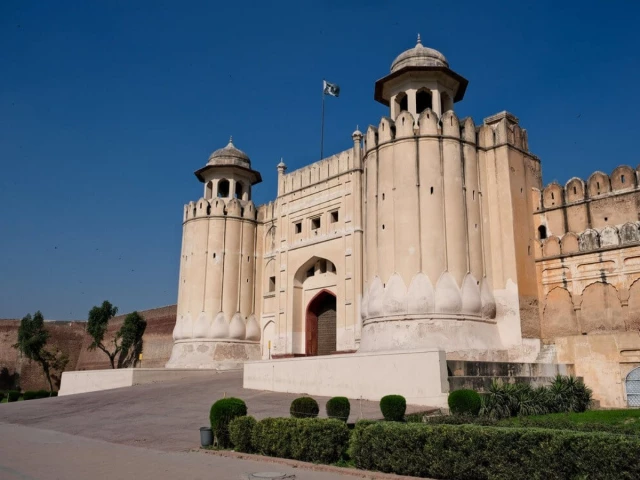Restoration project reveals hidden Mughal architecture once used for royal privacy
A centuries-old secret beneath the Lahore Fort has been rediscovered. The long-forgotten Khilwat Khana chambers, hidden beneath the fort’s Khilwat Khana and Shah Burj Quadrangle, have been painstakingly restored under a major conservation initiative led by the Aga Khan Cultural Service-Pakistan.
The restoration, carried out as part of the Heritage and Urban Regeneration: Tourism Development in Lahore Fort and its Buffer Zone project, was carried out in collaboration with the Walled City of Lahore Authority, with financial support from the Agence Française de Développement and the Government of Punjab.
Once used for royal privacy and palace operations, the underground chambers comprise an intricate network of rooms, staircases and corridors. Over the centuries, these underground spaces fell into neglect and decay, buried under layers of time and history.
Now, through scientific restoration and traditional craftsmanship, they have been revived as one of the fort’s most fascinating and least explored attractions.
Conservation work focused on structural strengthening, drainage and ventilation improvements, and safe access for visitors, while preserving the authentic Mughal architecture. Experts describe the project as a model for heritage conservation, blending ancient building methods with modern conservation techniques to ensure long-term stability and public engagement.
Locally known as Teh Khanay, the chambers span three levels and cover nearly 816 square meters. Historical records suggest that the lower levels were once used for the storage of perishable goods and royal documents. Some accounts also suggest that a ward served as a holding area for prisoners in later periods of the fort’s history.
According to Aga Khan Cultural Service-Pakistan (AKCS-P) officials, the chambers will soon open to the public through guided tours that will give visitors a rare glimpse into Mughal life. The space has been enhanced with soft lighting, interpretive screens and ambient sounds designed to provide an immersive experience while preserving the sanctity of the cultural heritage.
“This conservation effort has turned unknowns into knowns,” said Wajahat Ali, director of conservation and design at AKCS-P. “Through structural repairs, we have redistributed the load of the monuments above, consolidating and strengthening the fort’s northern section. We have also repaired water damage caused by later interventions during the Sikh and British eras.”
Ali noted that the project’s impact goes beyond architectural revival – it has also revitalized traditional craftsmanship by involving local craftsmen and artisans in all stages of the process. “We see it as a legacy brought back to life,” he added.
The Khilwat Khana restoration represents not only a technical achievement but a reconnection with Lahore’s layered past. It reveals an overlooked dimension of Lahore Fort – a place where architectural mastery, history and culture meet.
Dating back to the 11th century, the Lahore Fort, or Shahi Qila, is one of South Asia’s most magnificent Mughal monuments. Rebuilt by Emperor Akbar (1556-1605) and later expanded by Emperors Jahangir and Shah Jahan, the fort is home to landmarks such as the Sheesh Mahal, Diwan-e-Khas and Naulakha Pavilion. Despite later changes under Sikh and British rule, its Mughal essence has endured through time.



